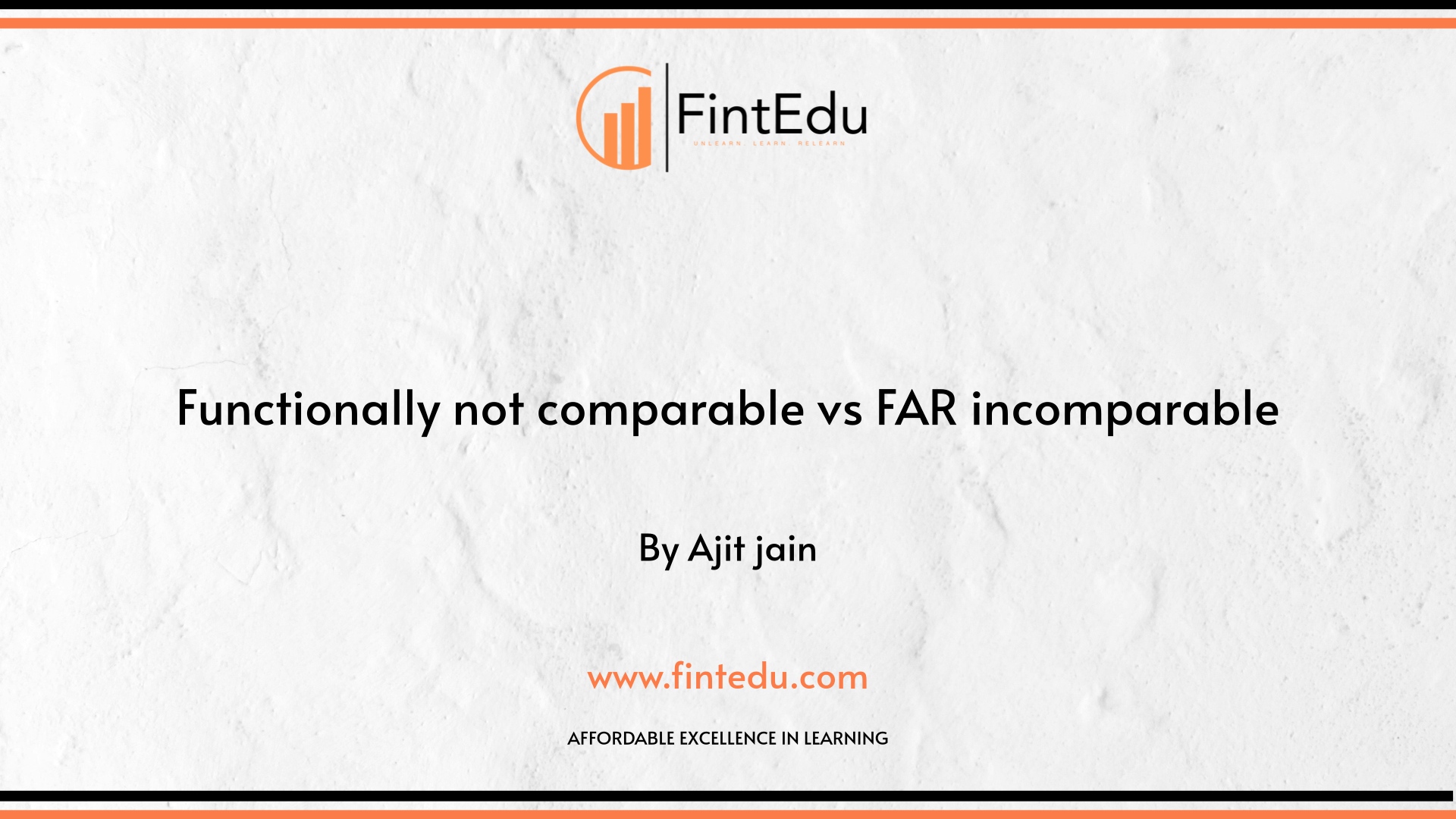LISTEN TO THIS ARTICLE
The transfer pricing landscape is continuing to shift and develop and one of the issues that recently has attracted a lot of interest is the value chain analysis (VCA). It became an important tool for TP assessment in relation to value creation as a result of the OECD’s BEPS project. However, there are some questions which are knowing to be quite pertinent including; What is VCA? Why has VCA deemed to be so important? And how can these multinational enterprises or MNEs incorporate VCA effectively in TP?
Overall objective of the article is to present VCA within the framework of transfer pricing. It’s then possible to outline its development, categorise the core fundamentals, review the existing analysis techniques and discuss practical cases to identify the lessons learnt. This is to enable TP practitioners on the knowledge and strategies required in harnessing VCA to the optimum in the post BEPS environment.
The Rise of VCA in Transfer Pricing
For this, it is necessary to look at the OECD’ Base Erosion and Profit Shifting (BEPS) project, which will allow us to understand the increasing role of VCA in the processes of intercompany pricing. BEPS project was initiated in 2013 with the view to eliminate the use of tax planning arrangements that utilised differences in the code to switch profits in relation to a particular activity to jurisdictions with low tax rates. One of them was to endeavour to ensure that transfer pricing decisions provided value added as intended.
This was to accord with the BEPS Actions 8-10 Final Reports in 2015 where it was pointed out clearly that there was the necessity to draw real and precise boundaries of the actual transactions of the related parties by the use of detailed functional analysis. The reports included the phrase “value creation” into the OECD Transfer Pricing Guidelines for Multinational Enterprises and mentioned the significance of identifying how and through which degree value was produced inside the MNE groups as well as how every member of the group contributed to the generation of value.
Thus, although the reports provided no direct requirement to establish a VCA, they contributed to its growth. Thus, the emphasis on value drivers, integration of business operations and interdependencies of functions in an MNE group outlined the need for a new TP approach based on value-chain concept.
Value Chains vs. Supply Chains
Before diving into the nitty-gritty of VCA, it's important to clarify a common point of confusion: the difference between the two; Value Chain & Supply Chain. To the layman, it is difficult to differentiate between them even though they are two different ideas.
Supply chain management, therefore, is a system that identifies the organizations, functions, parties, flow and management of materials and products from the point of their origin to consumption by the end consumers. It relates more to the tangible transport of goods and the operational process of moving products to the consumer with optimal results.
A value chain on the other hand covers a broader spectrum in that a firm undergoes a number of activities to provide a product, from its design to production, marketing, delivery and after–sales services. The application of the proposed framework is to focus on the issue of improving each activity for value creation and providing competitive advantage to the firm.
Namely, the supply chain is a part of the value chain that is more focused on the logistics of delivering resources and services. It is crucial to draw this distinction because, when applying traditional TP methods, many organization have assessed the determinations of intercompany transactions by examining the supply chain in a vacuum. VCA requires a broader perspective, given that the focus is on how everything – it is not just the physical work – forms value.
Conducting a Value Chain Analysis
With the conceptual groundwork laid, let's turn to the practical steps involved in performing a VCA. While the specifics will vary depending on the company and industry, the general process can be broken down into four key phases:
- Industry and Company Strategy Analysis: The first step is to understand the competitive dynamics of the industry and the company's positioning within it. This involves researching the industry's profit drivers, key success factors, and value chain structure. At the company level, it's important to identify the specific strategy employed to navigate the industry environment (e.g., cost leadership vs. differentiation).
- Value Chain Mapping: Next, the company's value chain activities need to be mapped out in detail. This includes both primary activities (e.g., inbound logistics, operations, outbound logistics, marketing & sales, service) and support activities (e.g., firm infrastructure, human resource management, technology development, procurement). For each activity, the analysis should consider the functions performed, assets used, and risks assumed.
- Value Driver Analysis: With the value chain map in hand, the next step is to identify and evaluate the key value drivers. These are the factors that allow the company to generate above-average profits and can include things like unique intellectual property, scale economies, network effects, switching costs, etc. The analysis should consider how each value driver links to specific activities in the value chain and which entities are involved in their development and exploitation.
- TP Policy Alignment: Finally, the insights from the VCA need to be overlaid onto the company's TP policies. This involves assessing whether the current TP model appropriately reflects the value chain reality, including whether returns are being properly attributed to the entities responsible for value creation. Any misalignments should be identified and addressed to ensure the TP outcomes are consistent with the VCA findings.
Throughout this process, it's critical to engage with key business personnel to ensure the analysis is grounded in operational reality. The VCA should be based on contemporaneous, verifiable data and the rationale for all conclusions should be clearly documented.
Analytical Tools and Frameworks
Many methods and models have been published to help in the application of VCA. Though, there is no means that is without its demerit, they can help bring direction and scientific comprehensiveness to the analysis. Some of the most commonly used include
Porter's Value Chain:
This model was formulated by Michael Porter in 1985; it consist of value activities, where a business firm’s economic value delivery system is divided into two categories namely, the primary activities and the support activities. However, often it may be necessary to modify it according to the peculiarities of the company and industry.
Balanced Scorecard
This was developed by Kaplan and Norton for examining a firm’s performance on the basis of four perspectives: financial, customer, internal business, and innovation and improvement. In so doing, it can offer a report that covers most of the value addition as depicted by both the financial and non-financial performance indicators.
Process Contribution Analysis
This tool determines the amount of value that is created by various activities in relation to each other. Generally, it entails making a matrix of processes and then ranking them based on the impact or significance to the company together with the firm’s performance. Hence various roles of each entity are often measured using the RACI framework which consists of the Responsible, Accountable, Consulted, and Informed parties.
Residual Profit Split Analysis
A special case of the double margin is the residual profit split: it may be suitable for the companies with highly linked value chains. This process entails distributing the functional returns automatically in relation to benchmarking research, and distributing the remainder of the profit in relation to each entity’s share of non- routine value drivers.
Considering the peculiarities of the chosen company and the industry it belongs to, the tool to be used will have to be defined. Sometimes, it may be necessary to use a blend of techniques in order to obtain a definite value chain narrative.
Case Studies: Medtronic and Coca-Cola
To illustrate the challenges and best practices of VCA in the real world, let's look at two high-profile TP cases: Medtronic and Coca-Cola.
Medtronic: Medtronic, a medical device manufacturer, had a dispute with the IRS over the transfer pricing of intercompany transactions between its US parent and a Puerto Rican subsidiary. The IRS performed a VCA that treated the Puerto Rican entity as a pure contract manufacturer and allocated the bulk of the system profits to the US parent.
However, the Tax Court rejected this analysis, finding that it failed to properly account for the Puerto Rican subsidiary's significant contributions to product quality - a key value driver in the medical device industry. The court's decision underscores the importance of considering all relevant value drivers, even if they're not easily quantifiable.
Coca-Cola: In the Coca-Cola case, the central issue was the appropriate royalty rate paid by foreign subsidiaries to the US parent for use of intangibles. The IRS applied a VCA that treated the foreign entities as simple manufacturers and distributors, assigning them routine returns and allocating the residual profit to the US parent.
Coca-Cola challenged this, arguing the foreign entities performed significant non-routine functions related to marketing and customer relationships that created local intangibles. The case highlights the potential for divergent views on what activities are value-adding vs. routine and the importance of robust documentation to support the taxpayer's VCA.
Embedding VCA into the TP Lifecycle
As the Medtronic and Coca-Cola cases illustrate, VCA is not a one-time exercise. To be effective, it needs to be embedded into the ongoing TP lifecycle. This means:
Regular Updates: The VCA should be refreshed periodically to reflect changes in the business model, industry dynamics, or global operations. Major events like restructurings or acquisitions should trigger a VCA review.
Integration with TP Policy Setting: The insights from the VCA should directly inform the design and implementation of TP policies. The goal is to ensure the policies are aligned with the value chain reality from the outset.
Proactive Documentation: Contemporaneous documentation of the VCA process and conclusions is critical to defending the TP approach in the event of an audit. This includes not just the final VCA outputs, but also the underlying data, assumptions, and rationale.
Alignment with Other Reporting: The VCA should be consistent with other TP-related reporting, such as the Master and Local Files and Country-by-Country reports. Discrepancies between the VCA story and these documents can create audit red flags.
Use as a Strategic Tool: Beyond TP compliance, the VCA can be a powerful tool for business strategy. By providing a clear picture of where and how value is created, it can inform decisions about resource allocation, process improvements, and structural optimization.
Conclusion
In the post-BEPS world, VCA has emerged as an essential tool for aligning TP outcomes with value creation. By taking a holistic, value-driven approach to analyzing intercompany transactions, VCA provides a framework for developing and defending TP policies that reflect the economic reality of the business.
Performing a robust VCA is not a simple undertaking. It requires deep industry and company knowledge, a mix of quantitative and qualitative analysis skills, and the ability to bridge the tax and business worlds. But the effort is well worth it. A well-constructed VCA not only enhances TP compliance and reduces audit risk, but also provides valuable insights for business strategy and operational improvement.
As tax authorities increasingly focus on value creation, MNEs that proactively embrace VCA will be best positioned to navigate the complexities of the new TP landscape. By embedding VCA principles into their TP lifecycles, they can unlock the full potential of their value chains and drive sustainable, long-term growth.
Disclaimer: Content posted is for informational and knowledge sharing purposes only, and is not intended to be a substitute for professional advice related to tax, finance or accounting. The view/interpretation of the publisher is based on the available Law, guidelines and information. Each reader should take due professional care before you act after reading the contents of that article/post. No warranty whatsoever is made that any of the articles are accurate and is not intended to provide, and should not be relied on for tax or accounting advice.
Contributor
Related Posts


@@PLUGINFILE@@/Bahrains%20Domestic%20Minimum%20Top-up%20Tax%20%28DMTT%29%20Regulations%20An%20overvi...
Read More
@@PLUGINFILE@@/Transfer%20Pricing%20in%20the%20Cryptocurrency%20Space%20Global%20Perspectives%...
Read More